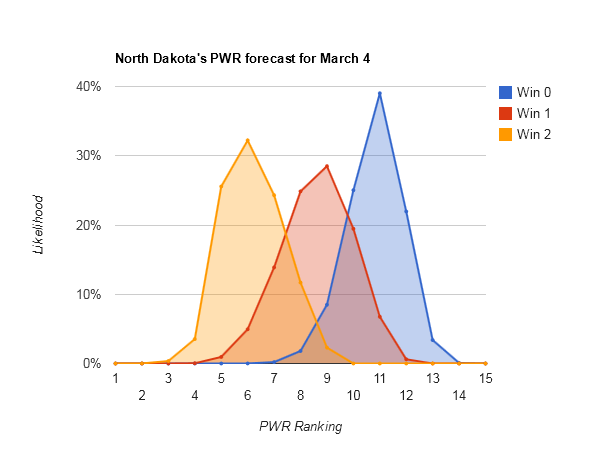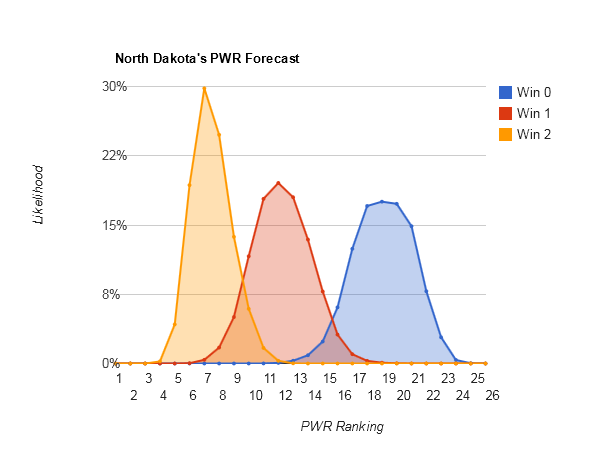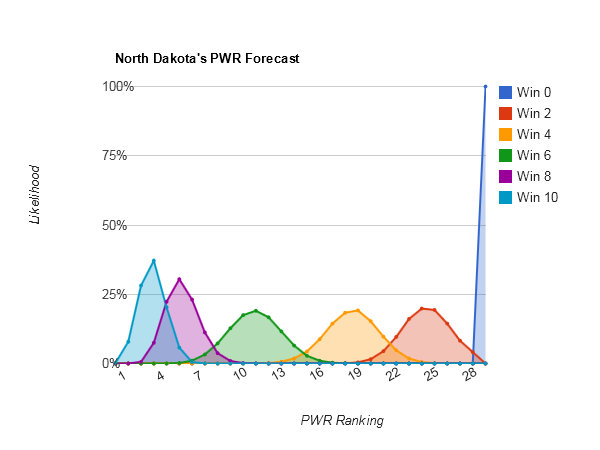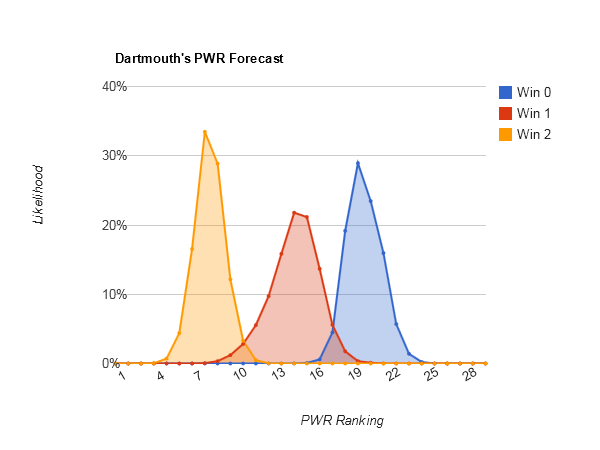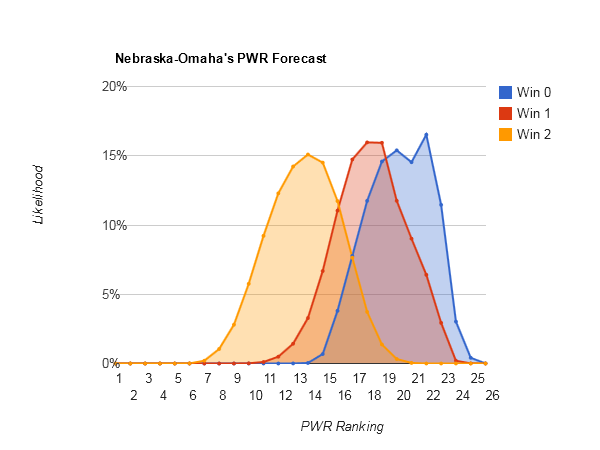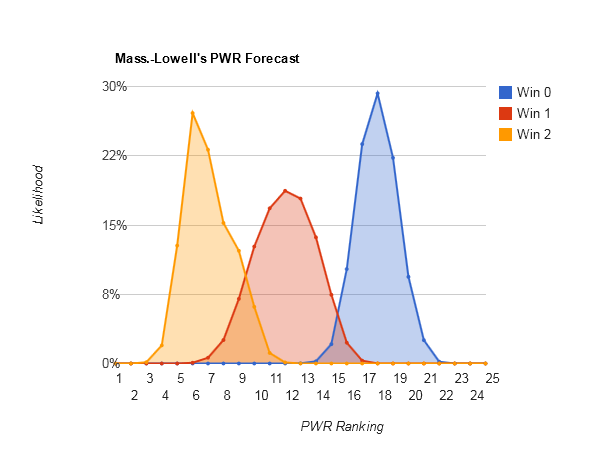#5 UND has climbed its way back into needing a sweep this weekend just to maintain its current ranking (Current PWR rankings).
Looking at UND’s PWR comparison details, NoDak has very limited upside potential this week. Only the Boston College comparison is obviously within reach, but UND is already ahead of BC in the ranking because of the RPI tie-breaker, so flipping that comparison may not even result in a ranking increase.
UND’s PWR comparisons and RPI details reveal a significant downside, however. The RPI value of winning these games is only .5784, not significantly different enough from UND’s RPI of .5455 to budge it much. The RPI value of losing is .3284, enough to drag down UND’s RPI a fair amount. The PWR comparison details reveal that UND is winning a number of comparisons only by a slim RPI lead (Naigara .5427, Mass.-Lowell .5448, Western Michigan .5384, St Cloud St .5412, and Dartmouth .5216).
Weekend games with the largest effect on UND’s PWR:
| Outcome | Number of games |
Average effect on UND’s PWR |
|---|---|---|
| North Dakota over Bemidji State | (2 of 2) | 4.60 |
| North Dakota over Bemidji State | (1 of 2) | 2.17 |
| Merrimack over Mass.-Lowell | (2 of 2) | 1.05 |
| Providence over Boston College | (2 of 2) | 1.05 |
| Merrimack over Mass.-Lowell | (1 of 2) | 0.93 |
| Air Force over Niagara | (2 of 2) | 0.92 |
| Air Force over Niagara | (1 of 2) | 0.73 |
| Alaska Anchorage over Alaska | (2 of 2) | 0.70 |
I did a minimum quick update on UND this week because I’m a little late and last week’s UND closes in on NCAA tournament berth was so comprehensive. However, if there’s anything else you’d like to see or any particular questions you have, just let me know!
Methodology
Each forecast is based on at least one million monte carlo simulations of the games in the described period. For each simulation, the PairWise Ranking (PWR) is calculated and the results tallied. The probabilities presented in the forecasts are the share of simulations in which a particular outcome occurred.
The outcome of each game in each simulation is determined by random draw, with the probability of victory for each team set by their relative KRACH ratings. So, if the simulation set included a contest between team A with KRACH 300 and team B with KRACH 100, team A will win the game in very close to 75% of the simulations. I don’t simulate ties or home ice advantage.
Resources
- Current PWR Rankings (SiouxSports.com)
- Current RPI Rankings (SiouxSports.com)
- CHN PWR Rankings (CollegeHockeyNews.com)
- TBRW build your own rankings (slack.net)
- Explanation of how PWR mimics NCAA tournament selection (CollegeHockeyNews.com)
